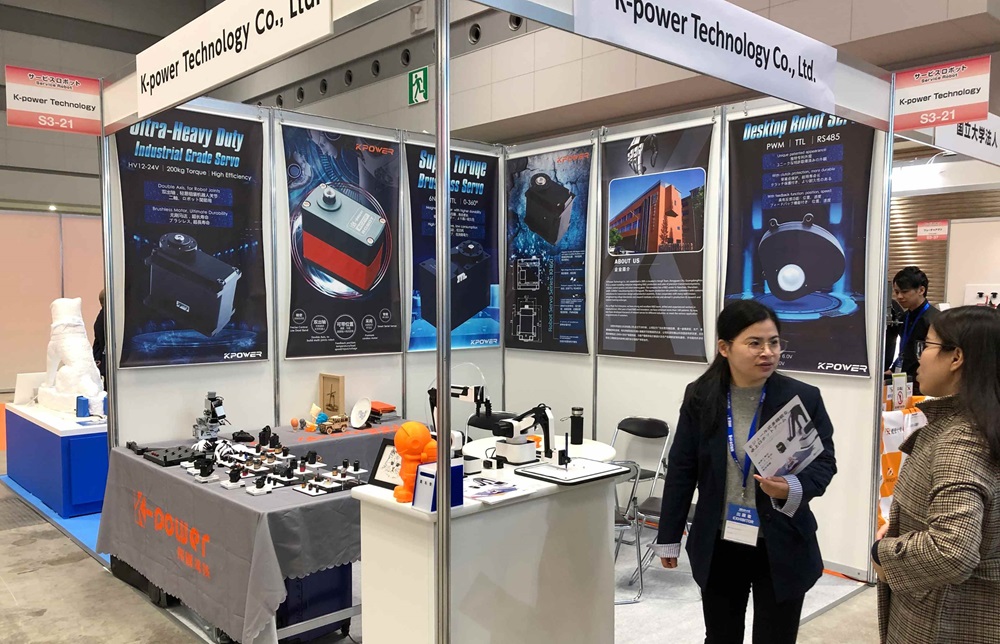When it comes to building a robotic arm, one of the most important components you need to consider is the servo motor. Think of it as the muscle behind the movement. Without it, your robotic arm wouldn’t be able to lift, rotate, or perform any of its tasks. But why exactly are servo motors such a big deal in robotic arms? Let’s take a deeper dive into why they’re so essential, and how the right choice can make all the difference.

Why Servo Motors Matter for Robotic Arms
Imagine trying to get a robotic arm to perform a delicate operation, like assembling small parts. If the servo motors aren’t precise or powerful enough, your robot will struggle, possibly even damaging components. That’s where servo motors come in, offering the right balance of precision, control, and power.
For example, if you want your robotic arm to pick up an item and place it gently on a surface, the servo motor allows you to control the arm’s movements with pinpoint accuracy. You won’t get this kind of precision from a simple motor or an unoptimized system.
What Makes Servo Motors Different?
So, what’s the difference between a regular motor and a servo motor? While regular motors can spin indefinitely, a servo motor is designed for precise movements within a specific range. It’s this controlled motion that makes servo motors the go-to option for robotics. They’re able to rotate to exact positions, maintaining torque and accuracy even under varying loads.
What does this mean in practical terms? Let’s say you need to move a robotic arm to a specific angle to perform a task. A servo motor can easily adjust to that angle, holding its position without drifting. This level of control is essential when you need reliability in your robotic design.
Picking the Right Servo Motor
Choosing the right servo motor can feel overwhelming with so many options on the market. Do you go for a high-torque servo, or is speed more important for your application? Let’s break it down:
- High Torque: If your robotic arm needs to lift heavy objects or apply force, a high-torque servo motor is crucial. For instance, when assembling parts or conducting tasks that require extra lifting power, these motors will ensure your arm can handle it.
- Speed: In some cases, speed is your priority. For tasks that require rapid movements, a servo motor with higher RPM (rotations per minute) is ideal.
Here’s a scenario for you: Imagine you’re building a robotic arm for a manufacturing line. You’ll need a servo motor that can handle the weight of parts and move quickly enough to keep up with the production process. Opting for the right balance between torque and speed is key to keeping things running smoothly.
Durability Matters
Servo motors are designed to last, but durability varies across models. It's not just about buying a motor; it’s about making sure it can withstand the wear and tear of your project. A robust servo motor can handle hours of operation without faltering. Whether it’s an industrial setting or a smaller DIY project, having a durable motor ensures that your robotic arm stays functional for a long time.
The Bottom Line
When it comes to making your robotic arm functional, the servo motor is the backbone that brings everything together. Without it, your arm won’t be able to move with the precision and control needed for delicate or heavy-duty tasks. Selecting the right motor based on your needs will help you build a more efficient, reliable, and long-lasting robotic system.
If you're in the business of building robotic arms or any project that relies on precise movements, you’ll find that investing in a high-quality servo motor will pay off. The performance, reliability, and longevity that come with the right choice of motor make a significant difference, helping your robotic arm perform like a pro.
Established in 2005, Kpower has been dedicated to a professional compact motion unit manufacturer, headquartered in Dongguan, Guangdong Province, China. Leveraging innovations in modular drive technology, Kpower integrates high-performance motors, precision reducers, and multi-protocol control systems to provide efficient and customized smart drive system solutions. Kpower has delivered professional drive system solutions to over 500 enterprise clients globally with products covering various fields such as Smart Home Systems, Automatic Electronics, Robotics, Precision Agriculture, Drones, and Industrial Automation.




































